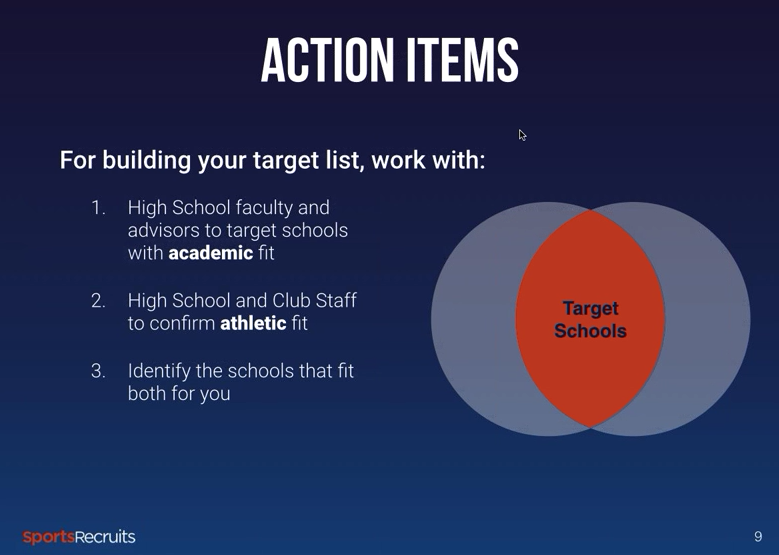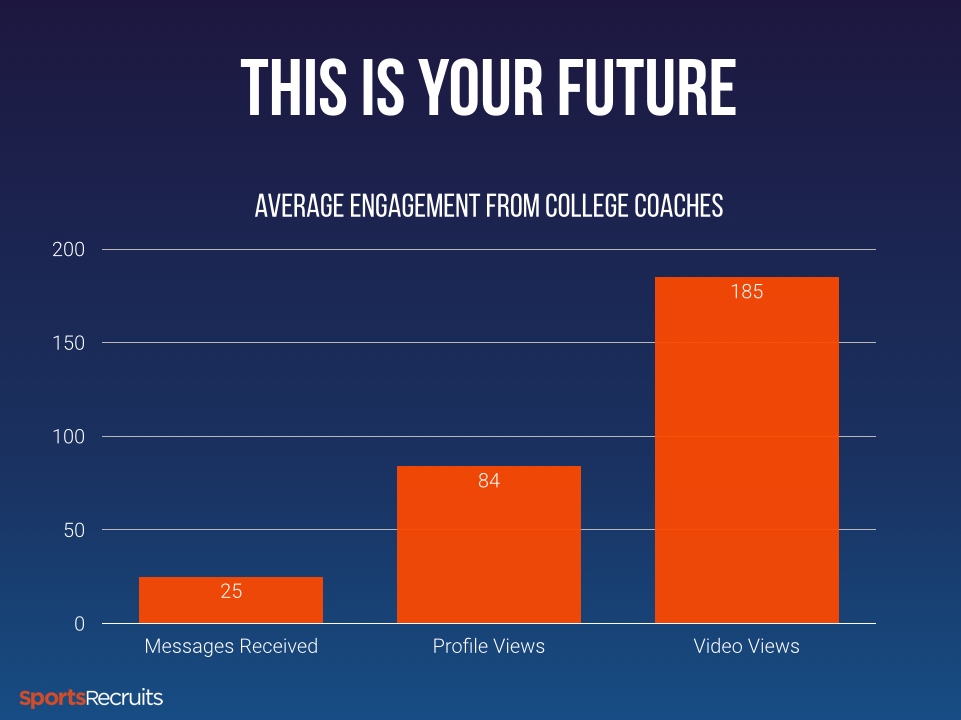In “The Importance of Research,” Part 1 of our 4-part Webinar Series “Engineering the Recruiting Process,” Sports Recruits Co-Founder Matt Wheeler discussed how vital it is for student-athletes to set a foundation in the recruiting process.
In the Webinar, Matt touches upon how building a target list of schools in an intelligent manner is vital. One of the most important aspects touched upon was the combining of the way in which a student-athlete, in conjunction with their club coaches, can create a good target list that is aimed at the right schools.
You can watch the video below, and also read some of the interesting takeaways from the presentation.
Takeaway One: Coaching Input is Vital
What It Means: The research component of the recruiting process is of paramount importance. It ensures that a student-athlete is not wasting their time or the time of club staffers and college coaches. Without a list of schools with which to begin from, the process can derail before it gets out of the station.
One of the advantages of integrating on our platform is how easy it is to assist your student-athletes with this research process.
As your student-athletes “Favorite” schools on their profile, it gives you as a coach the head start. We encourage clubs to have their players favorite 30 schools, and then have the club staffer go in, and based on their grades and skill level, help them narrow the list down from there. This makes the players on our partner clubs far more likely to make the leap, because they will feel confident in the schools they are reaching out to. The platform makes it easy for you to provide instant feedback, closing the loop that can result in a player being lost in the cracks. In just a few clicks, you can make a big difference – and it’s easy way for a club to see.
From the presentation: “We would see that sometimes an athlete would stall, and one of the reasons they provided for this delay is that they weren’t sure those were the right targets. They didn’t have any validation they were contacting the right coaches.”
Takeaway Two: More Activity, More Engagement
What It Means: One of the most statistically relevant findings in our data shows just how importance this research phase is: Players that do their research, consult with their families and coaches can feel confident in their target list of schools.
As you can see on the graph below, more favorites directly correlated with more engagement with college coaches. While this is not surprising, it exemplifies the point that the when student-athletes take control of their process, the more the process works – and it all starts with research and a strong foundation.
When combined with the functionality of integrated club staff being able to look through the favorites list and recommend those they think will be a great fit, players can move forward confidently.
From the presentation: “What we have seen is that the number of favorites correlate directly with the number of messages you send. This means your process is organized and active, which means more engagement.”
Takeaway Three: It’s Possible to Show Your Help
What It Means: While it is vital for a player to research a school’s academic side, receiving feedback to ensure they are targeting the right schools from an athletic perspective is also paramount. Our integrated club staffers are able to look through a player’s list and recommend those they think will be a great fit in just a few clicks with the “Tagging” feature.
As we mentioned, one of the main impediments to a student-athlete moving forward and contacting college coaches was because they were not certain their targets were correct. As indicated in the graph above, however, the engagement between student-athletes and coaches went up significantly as more schools were tagged for them.
These numbers show that club staffers can have a direct impact on a player’s process, and further, that the family can see this great help in action, as the engagement numbers correlate directly in a positive direction.
From the Presentation: “It was important for us to merge the worlds, for a player to go in and do their research and favorite schools, and then for the club staff to evaluate how they stack up at those schools.”
Takeaway Four: Data Helps
What It Means: The average player on our platform receives a considerable amount of engagement with college coaches. This is significant not simply because student-athletes are being aided by the platform, but because with this data we can confirm the principles behind it: Namely, that student-athletes can put themselves in control of their recruiting process.
From the presentation: “What we hope you take away from the slide is that this can be a guaranteed outcome. The rate of return on your time and effort in the process is very traceable, and you can see the results. What is interesting about this study was that it was agnostic to sport, where you were located, what club team you were on, or who your high school coach is. This is what we are striving for.”






